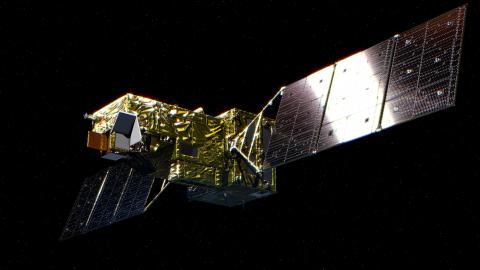Reaction to record temperatures at both geographical poles
The weekend saw record temperatures in both the Arctic and Antarctica, up to 40°C above normal for this time of year.

Thermal anomalies at both poles put the scientific community on alert / Pixabay.
Carlos Duarte - récord polos
Carlos M. Duarte
Executive Director of the Global Coral Reef R&D Acceleration Platform and holder of the Tarek Ahmed Juffali Research Chair in Red Sea Ecology at King Abdullah University of Science and Technology (KAUST) in Saudi Arabia
Thermal anomalies at the poles are a clear sign of disruptions in the climate system due to fossil fuel emissions. The recent event raises the concern to alarm level, as thermal anomalies have so far been recorded in the Arctic, but not in Antarctica, and never at both poles at the same time.
The consequence of destabilising the climate in the polar areas could be a domino effect of global changes leading to abrupt climate change, as these areas play a critical role in regulating the global climate system, as well as sea level. Our climate models do not have the capacity to anticipate points of no return that could trigger a domino effect of global change, but these signals clearly warn of the proximity of such tipping points in the climate system.
This is not good news, particularly in a context where the energy transition is also threatened by the war in Eastern Europe.
María Gemma Llorens - récord polos
María Gemma Llorens
Juan de la Cierva researcher in the Department of Geology at the Autonomous University of Barcelona
This is a very worrying rise in temperature. The ice mass over Antarctica is more than 3 kilometres deep. The temperature profile typically varies from -50°C at the surface to almost 0°C at depth, where the ice is in contact with the bedrock of the continent. It is the heat of the earth that causes the temperature of the ice to reach near melting point at the base.
A rise in surface temperature as severe as the one being recorded in Antarctica's Dome C, which is 40ºC higher than usual on a continuous basis, would also imply a brutal increase in the temperature of the ice at the base, exceeding 0ºC and producing a massive melting of the ice. All this molten water at the base would cause the polar ice cap to slide towards the ocean, producing a great acceleration and a massive arrival of the ice.
Ruiz Elvira - Récord polos
Antonio Ruiz de Elvira
Professor of Applied Physics and Honorary Research Professor at the University of Alcalá
The record temperatures at the poles are due to global warming caused by the accumulation of polyatomic gases in the atmosphere, which raises the temperature, especially at the surface of the oceans. This warmer surface displaces masses of warm air towards the polar regions, which, although smaller in area than those in the mid-latitudes, become warmer as the heat concentrates.
In the Arctic, moreover, there is a year-to-year feedback in the thawing tundra, which increases its melting each summer, and reduces the mirror effect of the ice. In the Antarctic, the warmer sea is moving ever closer to the continent. This warming of the polar areas is common to global warming.
The warming of the poles is of great concern, because if they were to melt completely, they would no longer reflect solar radiation, which would be absorbed and further warm the Earth. A warmer polar region in the northern hemisphere means a greater release of the methane that has so far been trapped under the ice, which has a warming effect 40 times greater than that of CO2.
Warmer poles radically change the circulation of air masses, increasing weather extremes, especially in Spanish latitudes: more cold and heat waves, more droughts and more torrential rains and floods.



